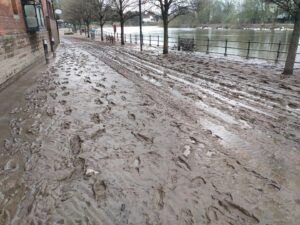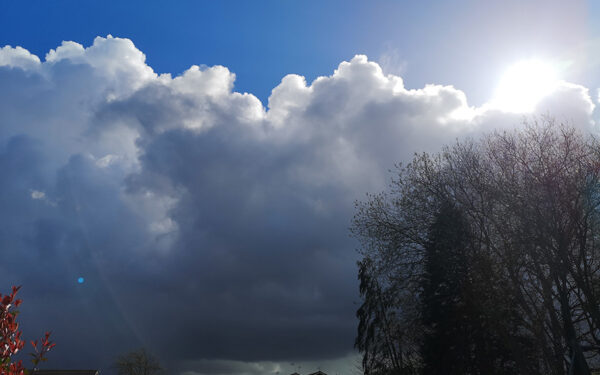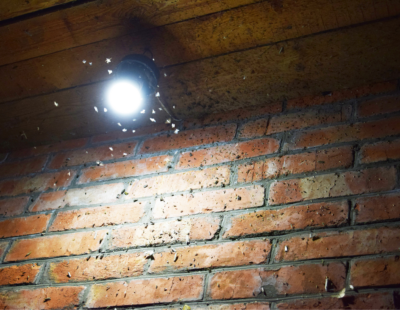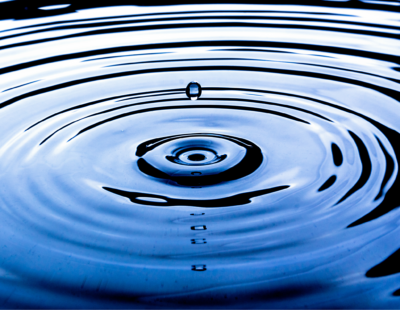Keeping outdoor lighting functional and low maintenance for customers is important to us at Solareye, so we’ve put together this article on why it’s important to periodically clean your solar lights, how to clean them, and how careful planning ahead of installation can reduce the need for regular maintenance and cleaning.
If you’re in need of solar lighting for your public space, get in touch – or check our product range to see what we can offer you.
Do you have to clean solar lights?
Cleaning solar lights helps ensure they operate efficiently and maintain their performance over time. Here are some reasons why cleaning your solar lights is important.
- Enhanced charging: Clean solar panels are more effective at converting sunlight into electrical energy. When your solar lights are clean, they charge more efficiently during the day, ensuring they have sufficient energy to illuminate your outdoor spaces at night.
- Brighter illumination: Dust and dirt on the light fixtures can block or diffuse the emitted light, reducing the brightness of your solar lights. Cleaning the fixtures can help maintain optimal illumination levels.
- Longer lifespan: In some cases, regular cleaning can extend the lifespan of your solar lights by preventing corrosion, rust, or damage caused by dirt and debris buildup. Well-maintained solar lights are more likely to last for many years. However, this is less of an issue with commercial grade products, such as Solareye80 ground lights and Solareye Bollard Light, which are designed and built to withstand dirt and water ingress.
Ever wondered why bugs seem to be attracted to your solar lights? Find out with our blog post >
How often do solar lights need cleaning?
So, we’ve established that it is beneficial to clean your solar lights, but how often should you clean them? The frequency of the cleaning regime will depend on a number of environmental factors as well as how hardwearing the lights are designed to be.
Environmental factors
The physical location of your solar lights and the surrounding environment will have a big impact on how regularly your lights will need to be maintained and cleaned.
Vegetation
Be sure to install your solar ground lights a safe distance from any neighbouring vegetation. For Solareye80 ground lights, we recommend installing 150mm – 300mm in from the edge of a path to minimise the potential for grass and shrubbery to grow over them.
Deciduous trees
If your site has trees which drop their leaves you may need to implement at least an annual cleaning regime to ensure any fallen debris does not cover or impede the performance of your solar ground lights.
Coastal locations
For coastal paths you may want to consider the areas where sand blown from the beach tends to gather and either avoid those areas or implement a cleaning regime to brush off the excess sand.
Flood prone areas
Thankfully Solareye80s are waterproof so flooding won’t cause them any harm, but the silt left behind after the floodwaters have drained away will need to be cleaned off so that the solar panel can once again harness the suns energy to charge the battery.
The below photos show the extent of the issue on a site in Worcester. Floodwaters left behind six inches of mud but once this was cleared away, the solar lights can be seen unharmed and working exactly as intended.



Avoid dust and water ingress on solar lights with IP68 rated lights
Solar lights are rated by an IP (Ingress Protection) coding system to determine what level of resistance they have against dust, dirt, and water. All ground lights, including the Bat Hat and Solareye Bollard Light are IP68 rated.
This means they’re completely resistant to dust and have the capability to withstand long-time immersion under water. Solareye Roof Light goes one stage further and is IP69 rated which means it can withstand high pressure washing and steam cleaning.
By ensuring our products are resistant to dust and water ingress their circuits and lighting output are protected against the elements, allowing them to operate at full functionality for a much longer time frame than most ‘off the shelf’ solar lighting products. For more information on the IP coding system for solar lighting, see our blog post.
Get your IP68 rated solar lights – contact us today, or check our product page.
How to clean solar lights
Cleaning your solar ground lights is as easy as simply brushing away any build-up of dirt and debris. Solareye80 ground lights have no removable or changeable parts and are sealed units which require very little in the way of cleaning and maintenance. The fact that they sit flush with the path surface means there are no protruding parts where dust and debris can gather and the majority of the ‘cleaning’ is done by foot and bicycle traffic moving across the top of the lights.
Low-maintenance solar lighting from Solareye
By ensuring your lights are clean, either via manually cleaning them or by choosing resilient lights which are designed to require minimal maintenance, you can ensure you provide reliable and energy-efficient illumination for your outdoor spaces. This not only extends the life of your solar lights but also helps you make the most of their eco-friendly benefits.
If you’re fed up with high-maintenance lights, then you’ve come to the right place. Our solar lighting is dirt resistance, off-grid, and environmentally friendly. Get in touch to find out more, see our range of products, or read on with some related articles.
Making the most of your outdoor solar path lights provides value to your projects – find out how >
Read our blog on everything you need to know about solar-powered bollard lights >





